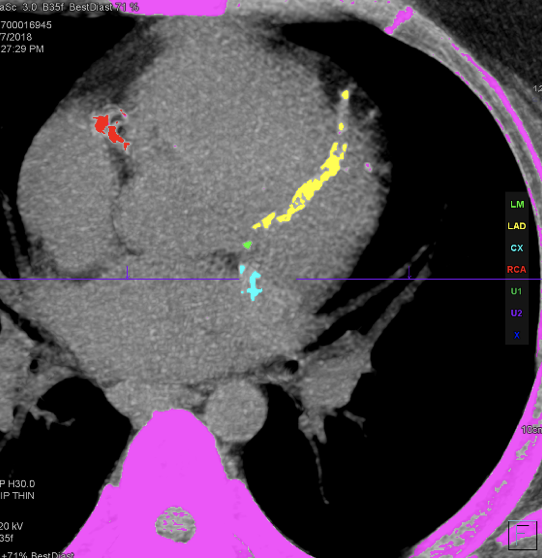
The role of Computed Tomography Calcium Scoring in early screening of Coronary Artery Disease

What is Coronary Artery Disease?
Coronary Artery Disease or Coronary Arterial Disease (CAD) is caused by damage to the main blood vessels that supply oxygen and nutrients to the heart. The formation of cholesterol plaques on the walls of the arteries will eventually reduce the size of the arterial diameter and in turn results in a reduction in blood flow to the heart.
Decreased blood supply to the heart can lead to chest pain (angina), shortness of breath as well as other symptoms of coronary heart disease. If the coronary artery is completely blocked, then the individual with affected vessel can get a heart attack. As the narrowing of the arteries takes a long time, usually an individual will only realise it when a heart attack occurs.
Risk Factors
There are various factors that contribute to this coronary artery damage. These include age, gender, family history, smoking habit, high blood pressure, dyslipidaemia, diabetes mellitus, overweight, lack of exercise, stress and consuming unhealthy diet.
Role of Computed Tomography Calcium Scoring
Usually a physician will recommend a calcium scoring examination to patients at risk of getting CAD. Calcium scoring is a non-invasive examination that uses a computed tomography (CT) scan. In this examination, information related to the presence, position and burden of plaques in the coronary arteries can be identified to determine the level and risk a person is likely to have CAD. The CT scanning process only takes less than 5 minutes without the need to administer contrast agent. In this examination, the level of calcium in the heart's blood vessels will be measured and the percentage of plaque will be calculated electronically.

Calcium in each heart blood vessel and its location is identified using different colors
In general, the results of calcium scoring will be classified as below:
|
Calcium Score |
Diagnosis |
Description |
|
0 |
No
identifiable atherosclerotic plaque. Very low cardiovascular disease risk. |
A
‘negative’ test. Greater
than 95% chance for absence of CAD. |
|
1-10 |
Minimal
plaque burden. |
‘Significant’
CAD very unlikely. |
|
11-100 |
Mild plaque
burden. |
Likely mild
or minimal coronary stenosis. |
|
101-400 |
Moderate
plaque burden. |
Moderate
non-obstructive CAD highly likely. |
|
Over 400 |
High
(extensive plaque burden). |
Higher
likelihood of at least one ‘significant’ coronary stenosis (>50%
diameter). |
For negative readings and those with minimal calcium score, the probability of getting CAD is very low over the next 2 to 5 years. Patients with mild and moderate calcium scores are usually advised to adopt a healthy lifestyle in terms of food intake as well as daily activities to reduce the risk of getting CAD. For patients with high plaque burden, further treatment and examination such as coronary angiography are usually required as the likelihood of coronary artery stenosis and the risk of heart attack is very high. At this point, the doctor will prescribe the medications that need to be taken as well as the preventive measures that the patient needs to take such as eating healthy diet and performing regular exercise. Regular visits to the doctor, especially for patients with high risk are very important to ensure the effectiveness of medications, intervention or procedures taken.













